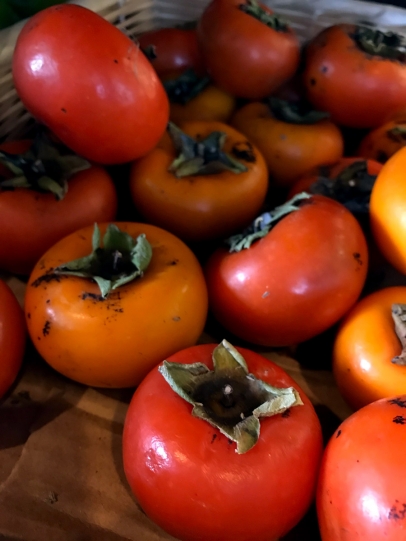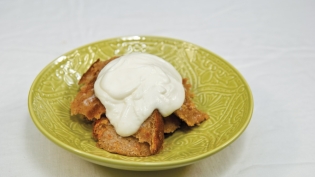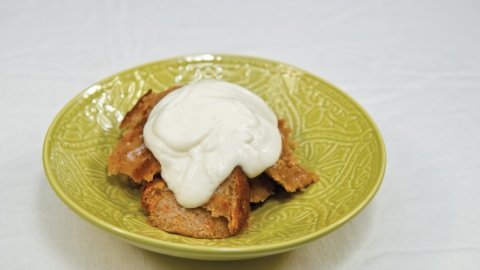Stalking the American Persimmon
There was often a hint of crispness in the early fall air when we visited the American persimmon patch near the Royal Palm Hammock within Everglades National Park. Swallows flitted to and fro in front of our vehicle and migratory raptors high above headed south in tight formation. On the drive from Homestead, my father would explain once again why this annual trek was vital, bringing together Native American tradition, horticulture and all-American flavor – neatly packaged in a South Florida native tree.
My father had learned of these trees from some of the area’s greatest pioneering ecologists and passed along the information only to us. Now here we were, knee-deep in the black water of the glades, looking for the elusive reddish fruit on the trees above and among the blades of the sawgrass below.
The persimmon family (Ebenaceae) has many species across the African, American and Asian tropics. Of the two species native to North America, the American persimmon (Diospyros virginiana) is the edible one. This denizen of the mixed broadleaf forests of our country’s river bottoms grows from New England to Oklahoma stretching all the way to extreme southern Florida. In early fall, the trees are highly visible along the interstate highways as their leaves turn to a striking scarlet and their fruit cling stubbornly to the thin upper twigs. Despite its wide range, few among us have ever noticed, much less taken the time to taste and ponder, this American standard.
Harbinger of Fall
When viewed through the eyes of the uneducated, the American persimmon looks like a small, lackluster fruit. Certainly its cover-girl Chinese cousins, the astringent and non-astringent persimmons (D. kaki Linn), get all the attention. But beauty is more than just skin deep and hers is a deep, all-American beauty. To the Native American, the persimmon – growing along the riverbanks and swamps across our continent – was a treat indeed. Fruit were collected, allowed to fully ripen (to avoid the extreme astringency) and savored throughout the fall. White man and Indian alike considered the fruit a rite of the season.
Wherever the persimmon occurred naturally, it was enjoyed by the people. Where it did not grow, it was taken and planted to add to the pleasures of life and aid with survival in the young land. It is debatable whether the American persimmon occurred naturally south of Lake Okeechobee – that is, without the intervention of people – but if one finds an Indian camp or settler homesite, there are likely to be American persimmons. When I eat them, I can picture the scene: persimmon trees draped in Seminole pumpkin vines, embodying the fall of plenty. Over generations, the trees have spread out from these planting sites and now form picturesque and delicious persimmon thickets.
The tree grows well in the South Florida landscape and, unlike most of our home garden fruit, excels with seasonal inundation. Less than 20 feet high, the small tree sprouts profusely from the roots, forming a persimmon coppice over time that attracts wildlife. They would also draw my father and me each fall to hunt for fruit, eat them and discuss the virtues of the fruit and the people who planted and improved them.
Hunting for Wild Fruits
Back in the tannic waters of the ’glades, we would search for submerged fruit, suspended just below the surface. Some were big, some small and they were always bedraggled due to bird and animal predation. To me, they have one of the most exceptional flavors I have ever known: sugary-sweet, with thick, pasty flesh like marmalade within a skin. The astringence is always close by. I have always thought it akin to the tannins in my favorite wine grape, Pinotage. They are always there, making the flavor anything but generic.
I love to eat my avocados and sapotes in late summer and fall, but with the American persimmon, there is the added thrill of the hunt. This is no domestic fruit just hanging around waiting to be eaten. This is a true American icon, growing wild in one of the natural wonders of the world.
The tradition lives on. Each fall I load up the kids and head to the glades in search of American persimmons. We venture back to the same persimmon stands. They hear the same lectures and the same history and feel the same excitement. The fruit actually get better with time, or perhaps it is just the stories. In our home garden, we also have wild and improved (‘Guthrie’) American persimmon trees growing. We need only to stroll out the door and harvest to our heart’s content, but do you really need an excuse for an afternoon of storytelling, persimmon eating and bonding?
The American Persimmon
Compared to the Oriental or Japanese persimmon, sometimes called kaki, the wild American persimmon is small — a bit smaller than a ping-pong ball. Its flavor is more fermented and sugary-sweet. In Florida, the season is from late August to early November. Fruit do not ripen at the same time. When ripe, the fruit turn from a green to burnt-orange. They also fall from the tree. They can be eaten out of hand when fully ripe, pureed, dried and used in preserves, chutneys, quick breads, puddings, pies and other dishes, sweet and savory.
American persimmon is used as a rootstock for Japanese persimmons for Florida, but trees are hard to come by and so are fruits.
The superior quality ‘Guthrie’ American persimmon was re-discovered by Lane Guthrie near 144th St. and Old Cutler Rd. The collection site was known to be an Indian trading post and camp over a century ago.
It is legal to eat the fruit from the trees in Everglades National Park. You just cannot remove anything outside your own body. So, to get seeds from the park, consider the ingest-and-collect-later method.
American persimmons are on the Slow Food Ark of Taste, a catalog of delicious foods in danger of extinction. Indians mixed pulp with corn meal and ground acorns to make breads and soups; African Americans made sweet pudding, candy and cakes from the fruits; and roasted dried seeds were used by settlers to make a coffee-like beverage. The wood is prized for pool cues and golf clubs.








